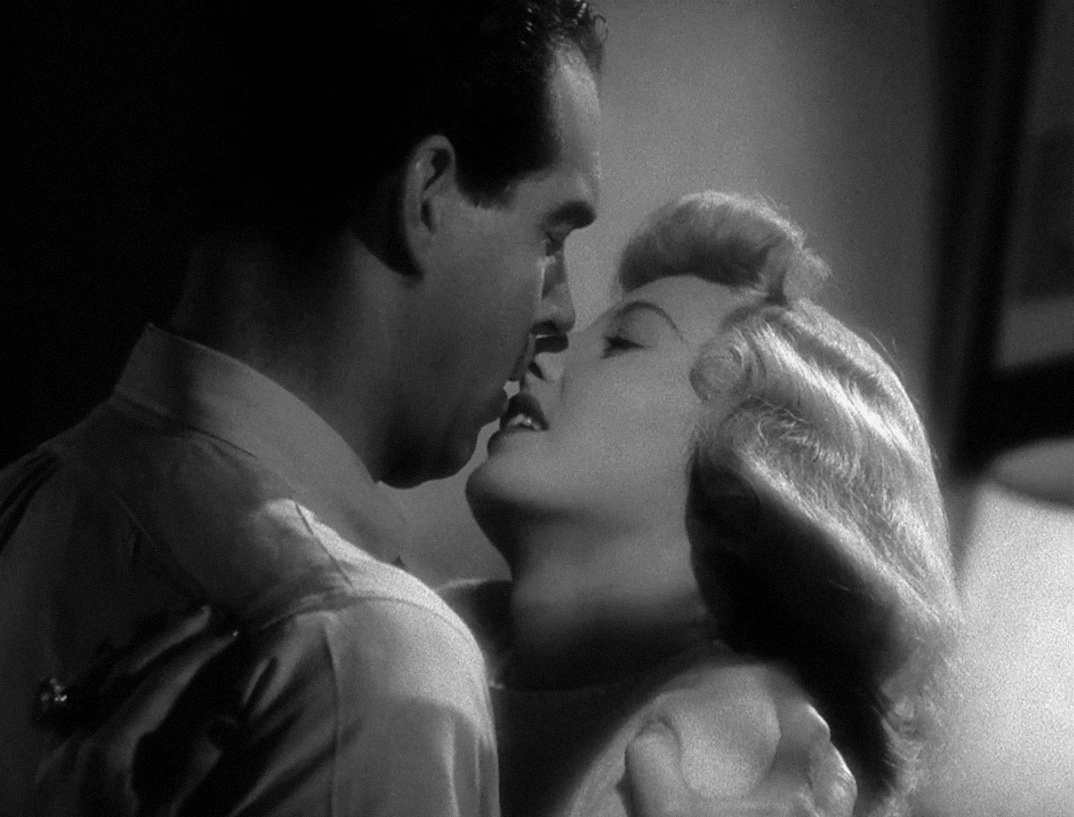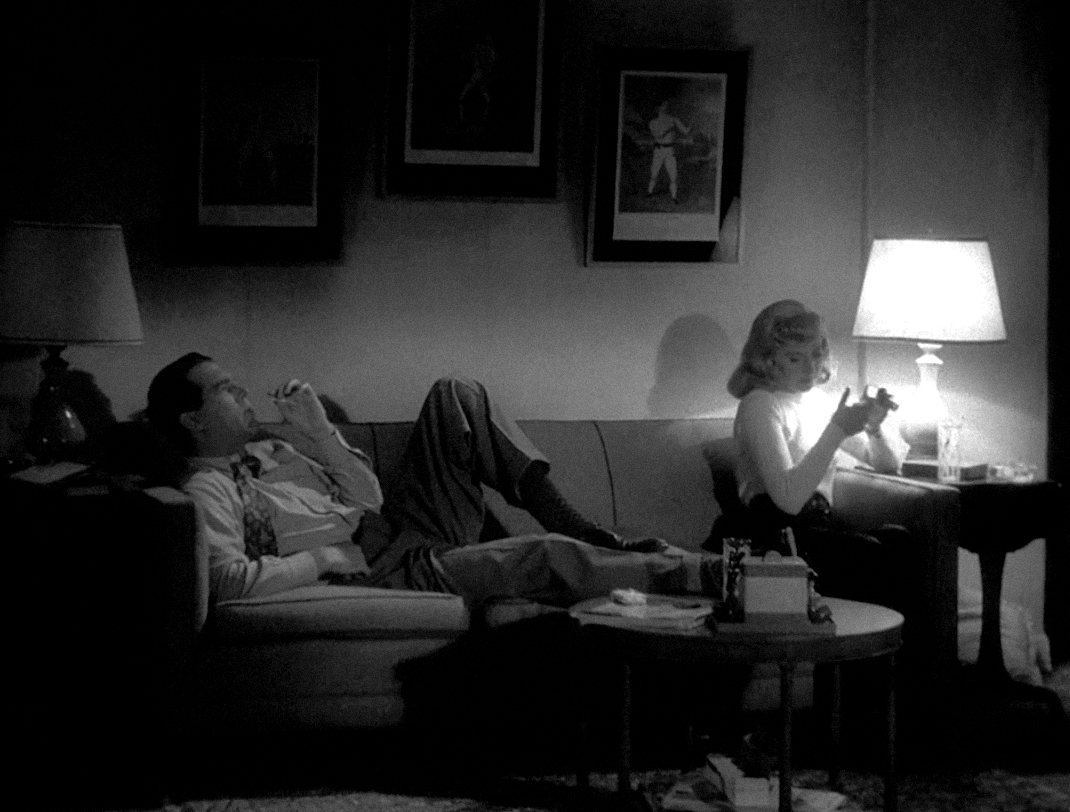Hit Me With Your Best Shot Episode 4.8

Double bourbon is fine, Walter."
As a baby cinephile in the 1980s I grew up with Body Heat (1981) as my noir of choice. Before I had any biblical knowledge of my own, I was utterly enthralled by Kathleen Turner's come-hither challenge and roaming hands, William Hurt's 'not-too-smart' insatiable lust and that broken window in a sticky Florida summer. For reasons that seem immature/absurd now, I avoided Double Indemnity for many years afterwards feeling 'I'd already seen it'. Never mind that Body Heat was less a remake than an "inspired by" or that Body Heat's reign as the Best of the Neo Noirs does nothing to diminish the bewitching "rotten to the core" vortex of Double Indemnity's scheming plot and sexual shenanigans.
Different noirs for different eras. But the long shadow that Body Heat cast on my early views of this entire genre is probably why my choice for this week's "Best Shot" is this seemingly minor one from Billy Wilder's 1944 classic.

This shot occurs at the end of a long "love scene" early in the picture between Phyllis (Barbara Stanwyck -- the collected Best Shot articles have many insightful comments about this unimproveable star turn) and Walter (Fred MacMurray) as they dance around their sexual and murderous desires. The scene is filled with talking in the shadows -- I could watch Stanwyck plot silently and minimistically for another two hours on loop -- and three bits of physical intimacy, an arm grab, a kiss and a 'comforting' embrace. The scene is then interrupted by a narrative flashforward. When we return to the scheming duo, they're presented to us like so. Phyllis side-eyes her willing rube, gazes at her hands (a repetitive gesture... just how much blood is on them?) and stands up to leave with this bit of disingenuously banal needinees...
will you phone me?
Double Indemnity has many gorgeous shot compositions involving diagonal shadows and I love all of them. But its visual prowess and ideas extends beyond venetian blinds. This is an atypical shot in the film's visual composition because, despite the square frame, it's very horizontal... as befits a post-coital tableau.
Yes, they've 100% just had sex even if they're still in the same clothes as before the flash-forward. We've never seen Walter with his guard this down though Phyllis, inscrutable Phyllis is still the exact same woman. Sealing the deal of this scene's brilliance for me is the costuming and cinematography: Phyllis has never before been clothed in such a tactile way (fuzzy sweaters must have equalled instant boners back in the 40s and 50s); and the lighting choice is provocatively counterintuitive since it's Phyllis, the not so innocent and virginal, who is bathed in soft light while Walter in shadow.
P.S. A runner up...

This shot, from the final confrontation between Phyllis and her conquest, could inspire novels out of context it's such rich and decadent. In context, which is what we should be talking about, it's a triump of both Art Direction and Cinematography; that same living room, which we've returned to multiple times, never feels as sinister in any other shot. The composition also allows Walter's shadow to enter the frame before him, which is telling, and then has both the regretful man and his dark shadow in frame, both separated. It's also my favorite example of Double Indemnity's great use of venetian blind shadows -- usually involving Walter -- and the diagonal tension they bring to each of his scenes withough the film having to resort to anything as crude as canted camera angles.

Straight Down The Link...
Aliston Tooey on Phyllis' spidery web
Amiresque "drive thru beer!"
Antagony & Ecstasy on Stanwyck's unparalleled femme fatale triumph
Cinesnatch this week's film coincides with some Best Picture Oscar revisionism here
Entertainment Junkie loves Stanwyck's satisfaction
Film Actually 'the stillness speaks volumes'
The Film's The Thing 'a messy bit of business in Aisle 3"
I Am Derreck on Walter's double secret life
Pussy Goes Grrr the scorpion and the frog
Victim of the Time considers the 'ugliness' of Double Indemnity
We Recycle Movies talks LA Architecture and venetian blinds
.... or see all the stills in chronological order
Next Week, Wednesday May 8th:
David Lean's Summertime (1955) with Katharine Hepburn in Venice. Join us by selecting your own choice for "best shot"